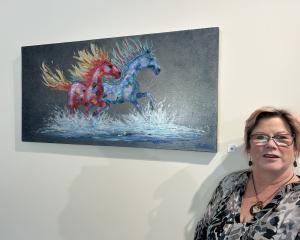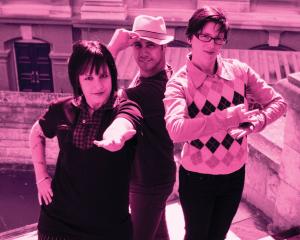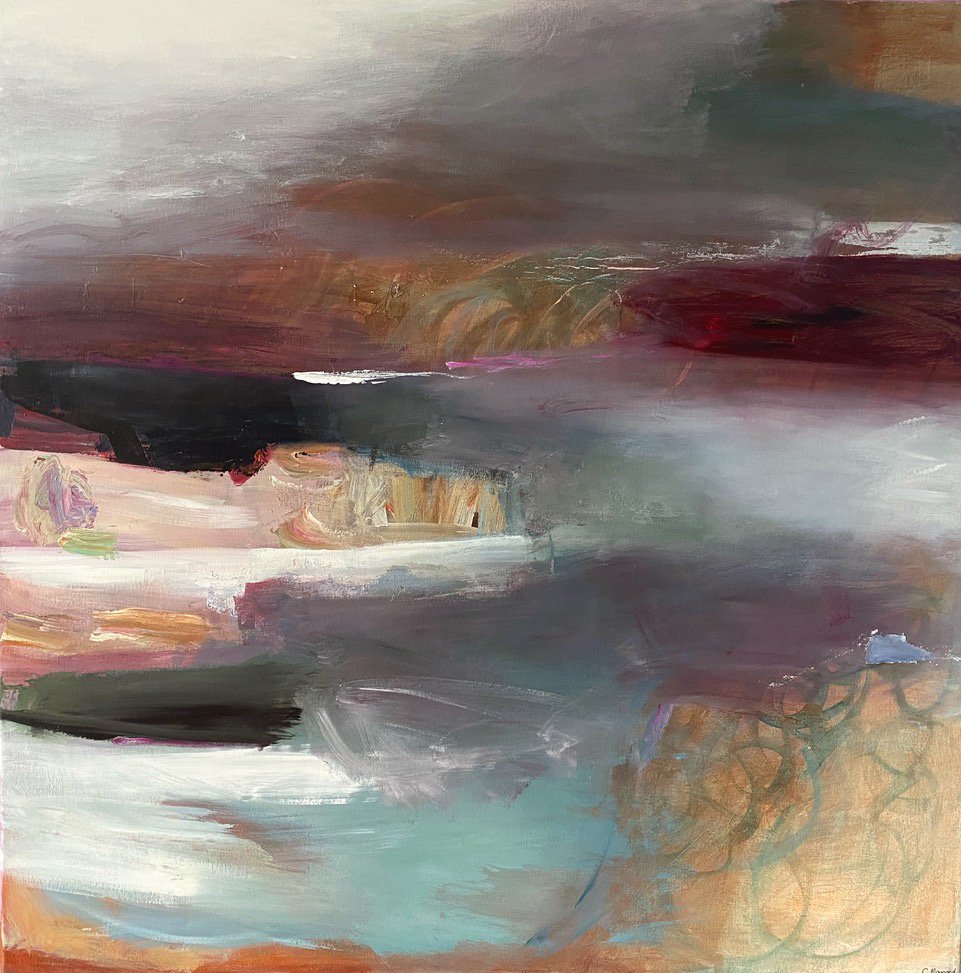
(Eade Gallery, Clyde)
Clyde’s Eade Gallery and Wānaka’s Gallery Thirty Three are both spotlighting an abstract artist this month, with fascinatingly contrasting approaches. In Clyde, Christine Maynard’s "Unveiled" focuses on the peaks and plains of the South Island, working with emotive splashes of colour and misty outlines. Maynard’s work is dreamlike and atmospheric, with sweeps of paint creating the impression of moody skies and rolling hills, crisp days by the sea and foraging in the forest. Layering acrylics, she scrapes back the paint to unveil texture and pattern, like a wanderer uncovering hidden gems and treasures on their adventures; after preserving them with a glaze, she leaves the viewer to become a visual archaeologist themselves, sifting through the landscape for hidden detail and ghostly impressions.
While works such as Coastal Harmony and Tierra Bloom are slightly more figurative in composition, Maynard moves deeper along the abstraction scale with pieces such as Picking Up the Rhythm and Backcountry Universe. Collectively, the works play on the senses like visual music, vastly different notes and tones coming together in harmony. The eye picks out distinctive features while the mind draws on personal memories to fill in the shadows, making each image an individual experience. Maynard’s colour palette is unplanned and organic, each shade building spontaneously on another with life and vividity.
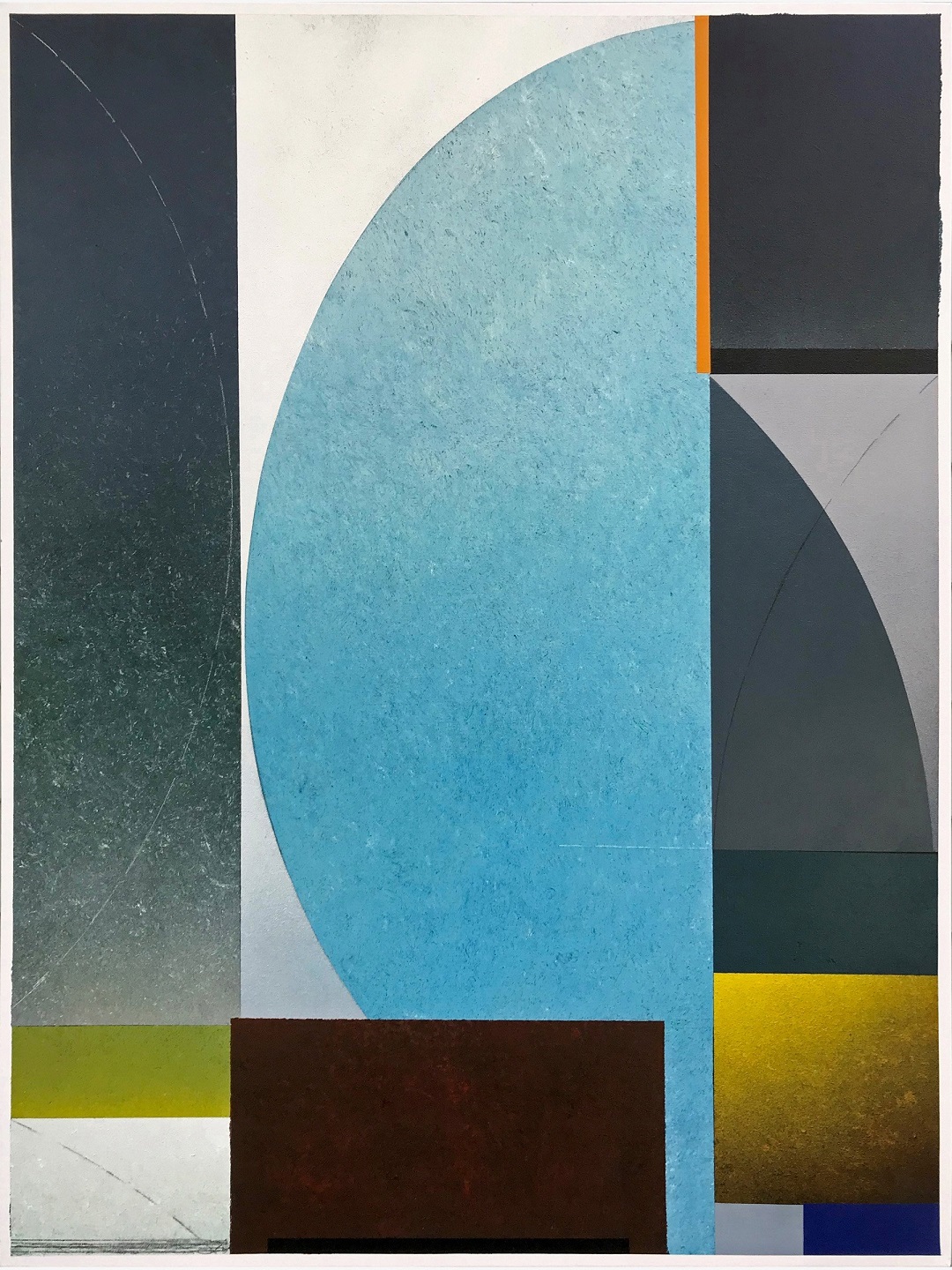
(Gallery Thirty Three, Wānaka)
In Wānaka, Richard Adams’ "Eclipse" takes a measured, geometric approach to abstraction. Exploring the theme of the eclipse, Adams experiments with blocking of colour and light. In a composition of primarily rectangles and intersecting horizontal and vertical lines, the interspersed circular shapes evoke sun, moon, and planet. Sketched lines indicate the presence of hidden, obscured objects—like human life itself, the imagery is shaped by forces both physical and intangible.
Overlapping some lines and perfectly joining others, Adams creates a sectional collage effect where one block and then another will advance or recede. The eye has to process a great deal of information at once and will naturally try to fix on a central point of perspective, which is deliberately obscured by the fragmented imagery and shifting shadows. Often, multiple layers and pops of colour will create an illusion of three-dimensionality, but Adams’ work is always a fascinating blend of depth and flatness. The viewer instinctively tries to look into the work, to see beyond the eclipse, but the composition almost forces the eye to skate across the canvas instead.
If you closed your eyes during an eclipse, the lingering view of the land and sky in your mind might look something like an Adams canvas — colliding impressions, overlapping angles and encroaching shadows.
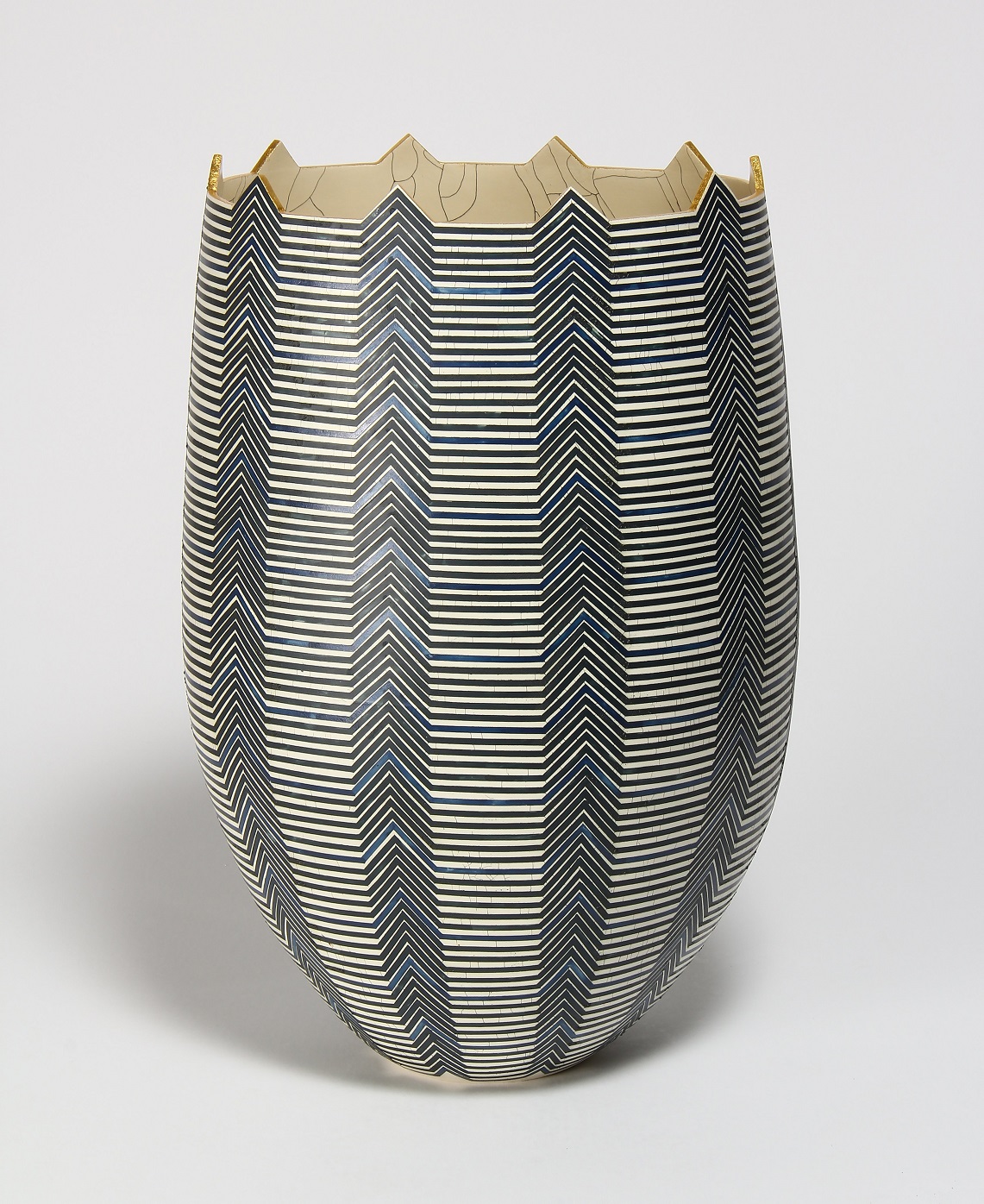
(Milford Galleries, Queenstown)
Mark Mitchell is a ceramicist and an artistic magician, conjuring optical illusions and the impression of malleability and movement from a static medium. Many of the titles from his latest collection — Landmark, Glance, Follow, Terrain — are suggestive of a journey, an adventure across the land; and much like the way stories and images emerge from the flat pages of a book, taking three-dimensional shape and life in the mind’s eye, Mitchell’s smooth ceramic surfaces appear to spill outwards and upwards. The curving planes of bowls and vases ripple like waves, surge into peaks and interweave like flax baskets. The visual effect is uncanny, and it is almost impossible to believe that the texture, undulation and elevation exist only to the eye, not to the touch.
With the rippled "Miniature" series, the decoration extends past the bowl rims, as if the patterned lines are a separate entity, wiggling over the surface and escaping their boundaries. The "Hothouse" vessels rise to a jagged, uneven outline, as if blocks of colour are dropping into place like a game of Tetris, giving the impression that each piece will continue to build on itself. Mitchell has a subtle mastery over colour and tone, employing the power of negative space and receding shadow to further enhance the illusion of depth.
By Laura Elliott








